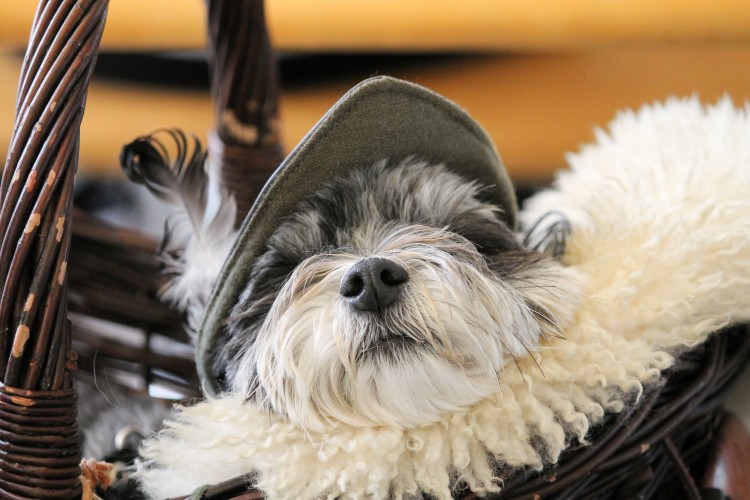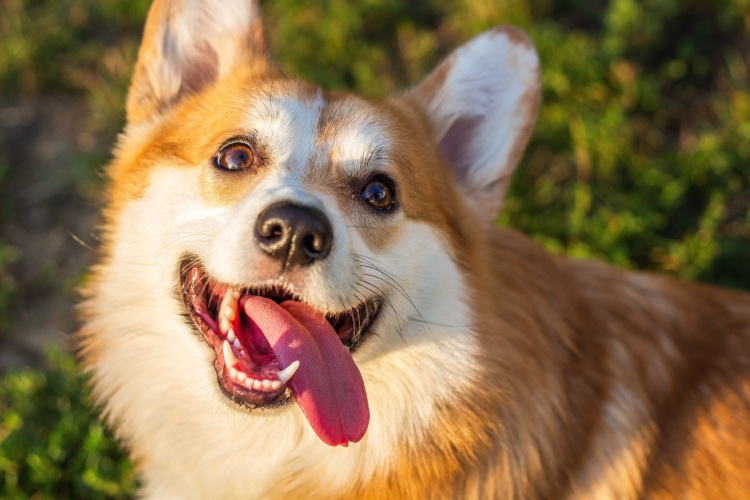Ready to help treat your pet to a healthy life?
Should Your Dog’s Nose be Wet or Dry?
By : Kathleen Crampton | Published Nov 4, 2025

You’ve just woken up to the most adorable face in the world: your dog’s. But every morning wakeup call is full of slobbery kisses and wet nose boops, begging the question, why are dog’s noses so moist? The truth is that a pup’s snout gives us a window into how they explore their world. Two factors, dog nose temperature and wetness, are crucial for regulating their bodies and processing all the smells they encounter.
Get the inside scoop on how your dog’s nose works as well as any warning signs to look out for.
What a healthy dog nose feels like
Many pet parents wonder, “Should a dog's nose be wet or dry, warm or cold?” Generally speaking, a dog’s nose should be wet (damp, rather than dripping) and cool to the touch. But keep in mind that the state of their sniffer may change throughout the day depending on weather conditions, level of activity, and if they’ve been sleeping.
We’ll go into more detail about all of these factors next.
Why dog noses are (usually) wet

Your dog’s nose is one of the most important parts of their body. While humans use all five senses to navigate the world around them, pups primarily use their nose and mouth to explore and understand their surroundings. You’ve likely seen working dogs sniffing around at the airport, at border checks, or other high-security places, or assisting police officers on a case. This is because dogs’ smell receptors are 10,000 times more accurate than a human’s smell receptors, allowing them to detect scents that a person otherwise wouldn’t be able to.
A wet nose helps them smell
We mention dogs’ powerful sense of smell because this innate skill is largely enabled by the makeup of their nose and olfactory system. Moisture allows a canine’s nose to essentially “trap” scent particles more easily, which they then use to process whatever they’re smelling. While humid conditions can help improve their olfactory skills, dogs’ noses also secrete their own thin layer of mucus, enabling them to detect scents no matter the weather. So, part of the reason your furry pal’s nose is wet is because of mucus.
Dogs lick their noses
Sometimes pups don’t rely only on mucus to boost their sniffing skills. They regularly lick their noses to help speed along the process. When they lick their nose, their tongue carries the scent-laden mucus to the roof of their mouths, where the vomeronasal organ (known as Jacobson’s organ) is located. This special organ helps pups sort out different smells.
Fun fact: Humans have the vomeronasal organ, but it’s considered vestigiary, meaning that it’s lost its operational function over time. But many animals, including dogs, cats, snakes, and even elephants, use this active organ to navigate their world.
Moist noses help dogs cool down
A wet nose isn’t just for sniffing purposes — it also works to help your dog cool down. Dogs only sweat through their paw pads, so they need extra help regulating their body temperature. Panting is the primary way they cool off. Another method is with the moisture on their nose evaporating to cool down their body (this is why a dog’s nose often feels cool or cold).
Is a warm dog nose a sign of a fever?

Dog nose temperature can be an indicator of their health, but it’s not the only factor. While a cold, wet nose is typical for most pups, that doesn’t mean that a warm, dry nose is a sign of a fever or that anything is amiss. Some dogs have dryer or wetter noses than others. It doesn’t necessarily constitute a trip to the veterinarian.
Before jumping to conclusions, it’s important to consider the usual state of your dog’s nose and what they might have been up to recently. Here are some examples:
- If your dog has recently exerted a lot of energy, their nose might be dryer than usual due to evaporation of moisture to cool themselves down.
- Has your dog just woken from a nap? Because they typically don’t lick their noses while they sleep, dogs’ snouts might be a bit warmer and dryer than they are during waking hours.
- If weather conditions are dry, your dog’s nose could also be on the dry side.
- Some dogs’ noses get dryer as they age.
That said, a warm, dry nose, along with other symptoms, might be an indication that your dog has a fever or other health issue.
When to talk with your vet
If your pup’s nose is warm and dry, and there are other abnormalities, such as redness of the eyes, excessive panting, vomiting, or behavioral changes, take them to the vet immediately. Your veterinarian will assess your pup for dehydration, fever, or other conditions and provide recommendations for proper treatment.
An overly wet or runny nose could also be cause for concern, potentially stemming from allergies, a respiratory infection, or even a foreign object lodged in their nostril. Some brachycephalic dog breeds, like Pugs, Bulldogs, and Bullmastiffs, are more prone to nasal drip than other breeds.
The important thing to remember is that if you notice anything amiss with your dog, the best thing to do is take them to the vet so that any potential issue can be diagnosed and treated.
How pet insurance can help
Even the most spritely, energetic pups can have mischief-related injuries or develop unexpected health conditions. If you notice that your furry companion just isn’t themselves and their nose doesn’t look or feel like it usually does, it’s important to get them the treatment they need. That’s where dog insurance comes into play. A dog insurance policy provides coverage for various medical scenarios, helping pet parents get their pups on the road to recovery without breaking the bank. Keep your dog happy and healthy with a pet insurance policy, no matter their breed or their age.
